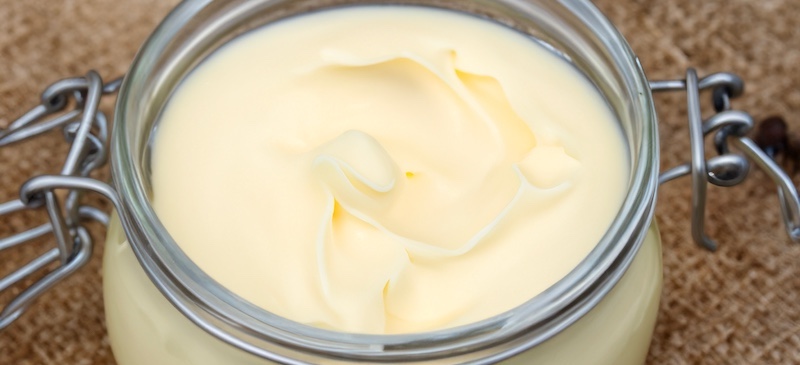This Dr. Axe content is medically reviewed or fact checked to ensure factually accurate information.
With strict editorial sourcing guidelines, we only link to academic research institutions, reputable media sites and, when research is available, medically peer-reviewed studies. Note that the numbers in parentheses (1, 2, etc.) are clickable links to these studies.
The information in our articles is NOT intended to replace a one-on-one relationship with a qualified health care professional and is not intended as medical advice.
This article is based on scientific evidence, written by experts and fact checked by our trained editorial staff. Note that the numbers in parentheses (1, 2, etc.) are clickable links to medically peer-reviewed studies.
Our team includes licensed nutritionists and dietitians, certified health education specialists, as well as certified strength and conditioning specialists, personal trainers and corrective exercise specialists. Our team aims to be not only thorough with its research, but also objective and unbiased.
The information in our articles is NOT intended to replace a one-on-one relationship with a qualified health care professional and is not intended as medical advice.
Beef Tallow Benefits for the Whole Body (Plus How to Use)
May 8, 2025

Beef tallow has made a major comeback in recent years, especially among those seeking more natural and traditional fats for cooking and skin care. Once a kitchen staple, this form of tallow is gaining attention for its impressive health benefits and versatility.
In this article, we’ll explore what beef tallow is, its nutrition facts, benefits, how to make it and the best ways to use it … plus any potential risks you should know.
What is beef tallow?
Beef tallow is a rendered form of beef fat, typically made from the suet (fat surrounding the kidneys) of cattle. When slowly cooked, suet melts down into a liquid fat that, once cooled, solidifies into a creamy, shelf-stable substance known as tallow.
Historically, tallow was widely used for cooking, making candles and even skin care before being replaced by vegetable oils and synthetic products. With a high smoke point and rich flavor, beef tallow is once again being celebrated for its many uses.
Nutrition facts
Beef tallow is primarily composed of healthy fats, and it is free of carbohydrates and protein, making it a pure fat source. It’s especially prized for its stable saturated and monounsaturated fat content, which resists oxidation during high-heat cooking.
A one-tablespoon serving of beef tallow (about 12.8 grams) contains approximately:
- Calories: 115
- Total Fat: 12.8 g
- Saturated Fat: 6.4 g
- Polyunsaturated Fat: 0.5 g
- Monounsaturated Fat: 5.4 g
It also contains some selenium, choline, vitamin E, vitamin D, conjugated linoleic acid (CLA), oleic acid, palmitoleic acid, stearic acid, linoleic acid and more.
Beef tallow benefits
When it comes to beef tallow benefits, there are several noteworthy advantages:
1. Excellent for cooking
Thanks to its high smoke point (around 400°F/205°C), beef tallow is perfect for frying, roasting and sautéing. It imparts a rich flavor to foods without breaking down into harmful compounds like many vegetable oils do at high temperatures.
2. Rich in nutrients
Tallow is a natural source of vitamins A, D, E and K, essential for immune health, bone strength, vision, antioxidant activity, blood clotting and skin vitality. These nutrients are more bioavailable when consumed with dietary fats like tallow.
Incorporating tallow into your diet can help provide these essential nutrients. Grass-fed beef tallow is particularly nutrient-dense, containing higher levels of CLA and omega-3 fatty acids.
3. Supports skin health
Beef tallow for skin is growing in popularity for good reason. Its fatty acid profile closely matches that of human skin, making it highly nourishing and non-comedogenic.
Tallow-based skin care products can help moisturize dry skin, soothe irritation and support healing. Its occlusive properties help retain skin moisture, and it contains compounds that may support skin barrier function.
However, some dermatologists caution that tallow can clog pores and may not be suitable for all skin types.
4. Natural and minimally processed
Unlike highly refined oils, traditional beef tallow is minimally processed, free from additives and easy to make at home, ensuring a clean source of fat. This simplicity appeals to those seeking whole-food ingredients in their diets.
5. Encourages satiety and provides energy
As a dense source of calories and fats, beef tallow helps promote satiety, supports hormone production, and provides a stable source of energy for those following low-carb or ketogenic diets.
In a study involving 11 women, researchers investigated the absorption of beta-carotene when consumed with meals rich in either sunflower oil or beef tallow. The findings revealed that beta-carotene appeared more prominently in plasma triacylglycerol-rich lipoproteins after ingestion with tallow compared to sunflower oil.
This suggests that beef tallow benefits may include enhancing the absorption of fat-soluble nutrients, potentially influencing postprandial energy availability.
6. Protects cognition
Fats are crucial for brain health, and while specific studies on beef tallow’s cognitive benefits are scarce, adequate fat intake supports brain function and development. The fatty acids contribute to the structural integrity of brain cells.
However, diets high in saturated fats may alter neurotransmitter activity, and their impact on cognition requires further research. Still, the monounsaturated fats can help protect cognition into older age.
7. Hormonal support
Fats are essential for hormone production, and consuming adequate dietary fat supports endocrine function. Nevertheless, excessive intake of saturated fats may affect hormone-sensitive processes, and balance with other fat types is recommended.
While specific studies on beef tallow’s effect on hormone regulation are limited, consuming sufficient dietary fat supports the synthesis of hormones like testosterone and estrogen.
A cross-sectional analysis published in the European Journal of Clinical Nutrition investigated the association between animal product consumption and plasma concentrations of steroid hormones and sex hormone-binding globulin (SHBG) in 766 naturally postmenopausal women. The study found that higher intake of total red and fresh red meat was associated with lower SHBG levels.
Specifically, women in the highest quartile of red meat consumption had SHBG concentrations approximately 8 percent to 13 percent lower than those in the lowest quartile. Lower SHBG levels can lead to increased availability of free steroid hormones, potentially influencing hormonal activity in the body.
While this study does not specifically isolate beef tallow, it suggests that components of red meat may impact hormone-binding proteins and, by extension, hormone availability. Further research is needed to determine the specific effects of tallow on hormonal support.
8. Enhances vitamin absorption
The presence of dietary fat, such as tallow, enhances the absorption of fat-soluble vitamins (A, D, E and K), facilitating their transport and utilization in the body. Incorporating beef tallow into meals can aid in the absorption of these vital nutrients, supporting overall health.
9. Anti-inflammatory potential
CLA, a compound present in animal fats such as tallow, has been shown to help lower systemic inflammation. Research has indicated that CLA may reduce levels of pro-inflammatory cytokines, thereby supporting the body’s anti-inflammatory responses.
Moreover, maintaining a balanced intake of dietary fats is linked to reductions in systemic inflammation markers, highlighting the importance of fat composition in managing inflammation.
10. Supports immune function
Fat-soluble vitamins found in tallow, particularly vitamins A and D, play crucial roles in maintaining immune health. Adequate intake of these nutrients supports the body’s defense mechanisms.
Ensuring adequate intake of these vitamins can help maintain a robust immune system.
Research conducted on animals has also hinted at the following potential beef tallow benefits, but more rigorous human studies are needed to confirm these potential beef tallow benefits:
While this type of tallow offers several potential benefits, it’s essential to consume it as part of a balanced diet, considering individual health needs and current dietary guidelines.
How to make beef tallow
Making your own beef tallow at home is simple and rewarding. Here’s a basic method:
- Source the fat: Purchase suet or high-quality beef fat, preferably from grass-fed cattle.
- Chop the fat: Cut the fat into small pieces to allow for even rendering.
- Render slowly: Place the fat in a heavy pot or slow cooker on low heat. As it melts, stir occasionally.
- Strain: Once the fat has fully melted and the solids (cracklings) turn golden, strain the liquid through a fine mesh or cheesecloth.
- Store: Pour into clean jars or containers. Allow it to cool and solidify before sealing. Store in a cool, dark place, or refrigerate for longer shelf life.
If you want to know exactly how to make beef tallow tailored to cooking or skincare purposes, you can adjust the rendering method slightly to ensure purity and texture.
How to use
Beef tallow is extremely versatile. Here are popular uses:
- Cooking: Use it for frying eggs, roasting vegetables, searing steaks or deep-frying.
- Baking: Substitute for butter or shortening in savory recipes.
- Skin care: Apply it as a moisturizer, balm or mix with essential oils for custom skin care formulations.
- Soap: Beef tallow creates hard, long-lasting bars of soap with a creamy lather.
Whether you’re aiming for culinary excellence or looking for natural skin care solutions, beef tallow has plenty to offer.
Risks and side effects
Despite its benefits, there are a few considerations when using beef tallow:
- High in saturated fat: Some health guidelines still recommend limiting saturated fat intake. If you’re concerned about cholesterol levels or heart disease risk, discuss with a healthcare provider whether tallow fits into your diet.
- Quality matters: Tallow from conventionally raised cattle may contain residues from antibiotics or hormones. For the best beef tallow benefits, choose grass-fed, organic sources when possible.
- Allergies and sensitivities: Though rare, some people might experience skin sensitivities when applying tallow-based products.
Always listen to your body, and make choices based on your personal health needs.
Frequently asked questions
Why are people putting beef tallow on their skin?
People are using beef tallow for skin because its fatty acid profile closely mimics the natural oils (sebum) produced by human skin. It’s rich in saturated fats, palmitic acid and oleic acid, which are known to support the skin’s barrier function and lock in moisture.
Tallow also contains fat-soluble vitamins A, D, E and K, which can promote skin repair and reduce inflammation. These properties make it popular in natural skin care communities, especially among those with dry, sensitive or eczema-prone skin.
Is beef tallow safe for your skin?
For most people, yes, beef tallow is generally safe for the skin when it is rendered properly and sourced from high-quality, grass-fed cattle. It’s non-toxic, minimally processed and does not contain synthetic additives found in many commercial skin care products.
However, skin sensitivity varies. Some individuals may experience breakouts or irritation, especially if they are prone to acne or if the tallow is not purified.
What are the risks of putting beef tallow on your skin?
The risks are minimal for many users, but they include:
- Clogged pores (especially on oily or acne-prone skin)
- Allergic reactions or sensitivities
- Contamination risk if the tallow is improperly rendered or stored
- Oxidation over time if not stored in a cool, dark place, which may reduce effectiveness
Always patch-test any new product before applying it to large areas of skin.
Is beef tallow good for your face?
Beef tallow benefits can include being good for the face, especially for those with dry or aging skin. It’s rich in skin-compatible fats and vitamins that help improve texture and hydration.
However, for acne-prone or oily skin, it might be too heavy. Its comedogenic rating is relatively low, but still, results vary widely.
What can you use to hydrate skin instead of beef tallow?
Alternatives to beef tallow for hydrating skin include:
- Shea butter (nourishing and non-comedogenic)
- Coconut oil (moisturizing but more comedogenic)
- Jojoba oil (closely resembles sebum, good for most skin types)
- Squalane (lightweight and stable)
- Aloe vera gel (hydrating and soothing, but best when paired with an oil-based moisturizer)
Choose based on your skin type and sensitivity.
Is beef tallow healthy?
Beef tallow is healthy in moderation, particularly when sourced from grass-fed cattle. Beef tallow benefits include that it contains stable saturated fats, monounsaturated fats (like oleic acid), and small amounts of vitamins A, D, E and K.
It is heat-stable, making it a safer choice for high-temperature cooking compared to many industrial seed oils. However, it is high in saturated fat, so it should be part of a balanced diet.
Is beef tallow healthier than seed oils?
This depends on context:
- Beef tallow is more stable at high heat and doesn’t oxidize easily, which is a benefit for cooking.
- Seed oils (like soybean, corn and canola) contain high levels of omega-6 polyunsaturated fats, which can oxidize and promote inflammation if consumed in excess.
Studies have suggested that a high omega-6:omega-3 ratio, common in Western diets, is linked to chronic disease. In that sense, tallow may be a healthier option for some, especially when balanced with anti-inflammatory fats (like omega-3s).
Why did people stop using beef tallow?
People stopped using beef tallow in the mid-20th century due to:
- Shift to vegetable oils (driven by industrial processing and marketing)
- Concerns over saturated fats and heart disease, particularly following the rise of the lipid hypothesis
- Changes in food manufacturing, where hydrogenated oils (e.g., Crisco) became cheaper and had longer shelf lives
Modern re-evaluations of fat show that not all saturated fats are inherently harmful, and tallow is being reconsidered as a traditional, wholesome fat.
Is beef tallow just lard?
No, but they are similar:
- Beef tallow comes from rendered beef fat (usually suet).
- Lard comes from rendered pork fat.
Both are animal fats, used for cooking and skin care, but they have different flavors and fat compositions. Tallow tends to be harder at room temperature and has a higher saturated fat content than lard.
Is beef tallow healthier than butter?
It depends on your health goals:
- Beef tallow benefits include that it is lactose-free and casein-free, making it better for those with dairy sensitivities.
- Butter contains small amounts of milk solids, which include lactose, but also beneficial compounds like butyrate and CLA.
- Nutritionally, both have saturated and monounsaturated fats, but butter also contains more cholesterol and is typically used in lower-heat applications.
Both can be part of a healthy diet when used appropriately.
Conclusion
- Beef tallow is a traditional fat that’s regaining popularity due to the potential beef tallow benefits it may provide.
- From its rich nutrient profile to beef tallow benefits for cooking and skin care, it offers a natural, versatile alternative to modern processed fats.
- Whether you’re learning what is beef tallow, curious about how to make beef tallow, wondering what the beef tallow benefits are or exploring its uses for skin health, incorporating it into your life can provide both culinary and wellness rewards.
- Just remember, as with any food, quality and moderation are key.

